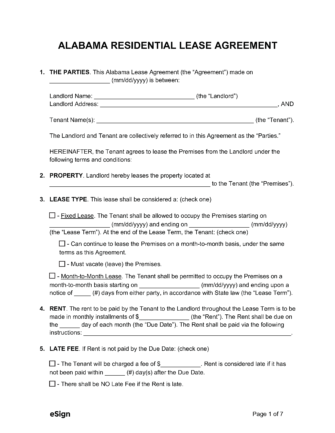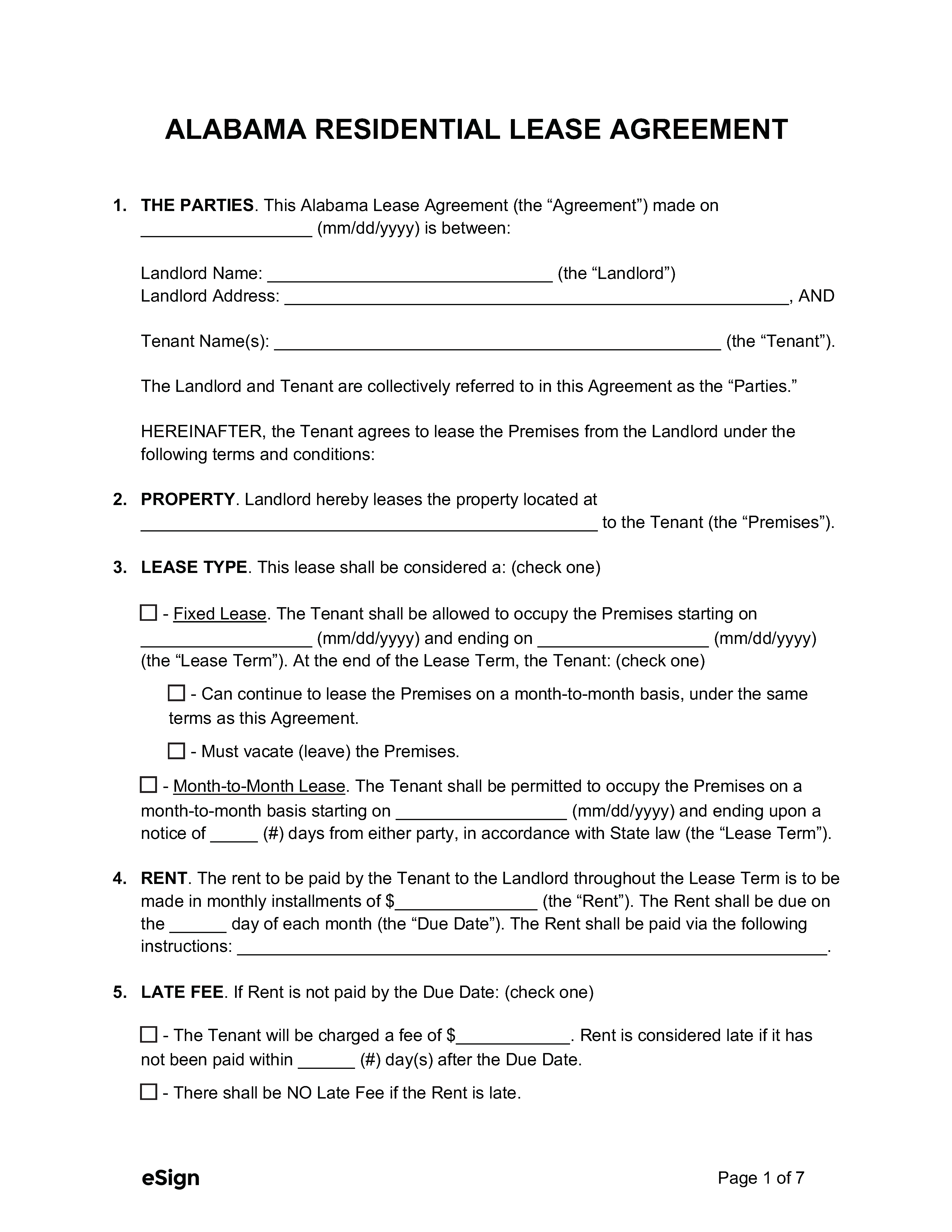Lease Agreements: By Type (6)
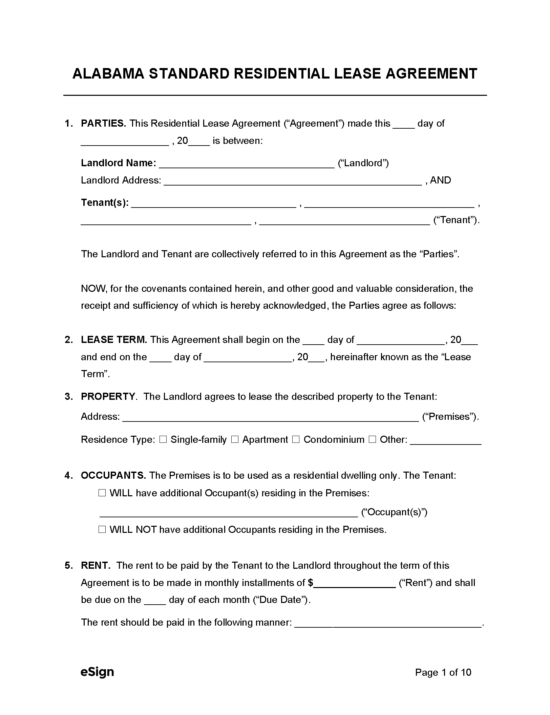 Standard (1-Year) Lease Agreement – The most common type of residential lease agreement, it establishes a fixed-term tenancy of one year. Standard (1-Year) Lease Agreement – The most common type of residential lease agreement, it establishes a fixed-term tenancy of one year.
Download: PDF, Word (.docx), OpenDocument |
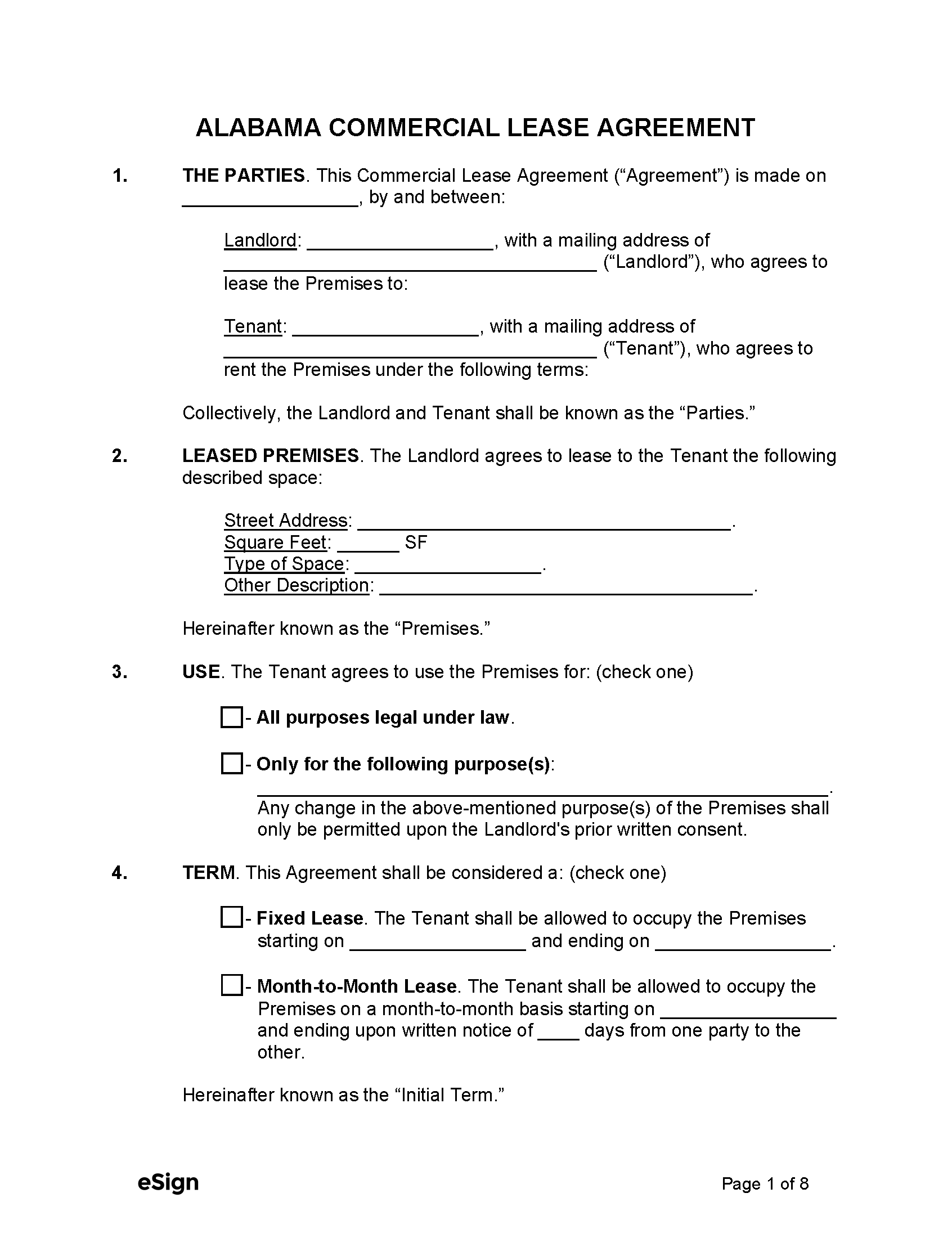 Commercial Lease Agreement – Used to rent non-residential property to a business tenant. Typically, the rent payment is calculated on a per square foot ($/sf) basis. Commercial Lease Agreement – Used to rent non-residential property to a business tenant. Typically, the rent payment is calculated on a per square foot ($/sf) basis.
Download: PDF, Word (.docx), OpenDocument |
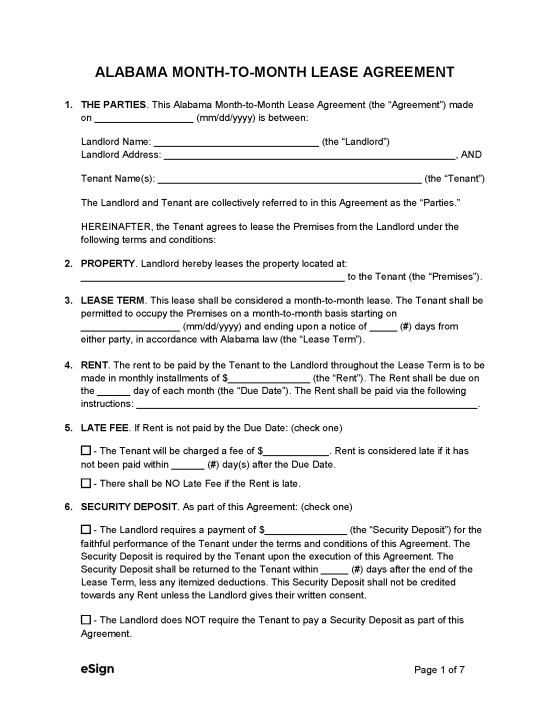 Month-to-Month Lease Agreement – A residential lease agreement with no end date. Either party may terminate the lease at any time by providing at least 30 days’ notice. Month-to-Month Lease Agreement – A residential lease agreement with no end date. Either party may terminate the lease at any time by providing at least 30 days’ notice.
Download: PDF, Word (.docx), OpenDocument |
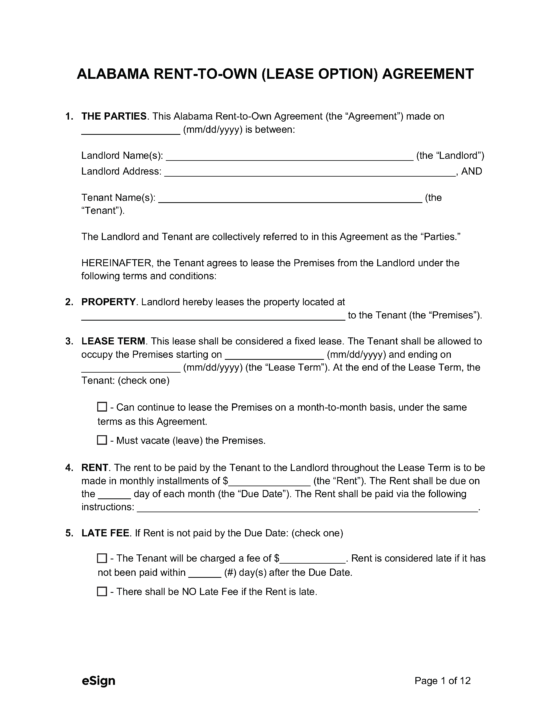 Rent-to-Own Agreement (Lease Option) – A standard lease that also offers tenants the option to buy the property under predetermined conditions. Rent-to-Own Agreement (Lease Option) – A standard lease that also offers tenants the option to buy the property under predetermined conditions.
Download: PDF, Word (.docx), OpenDocument |
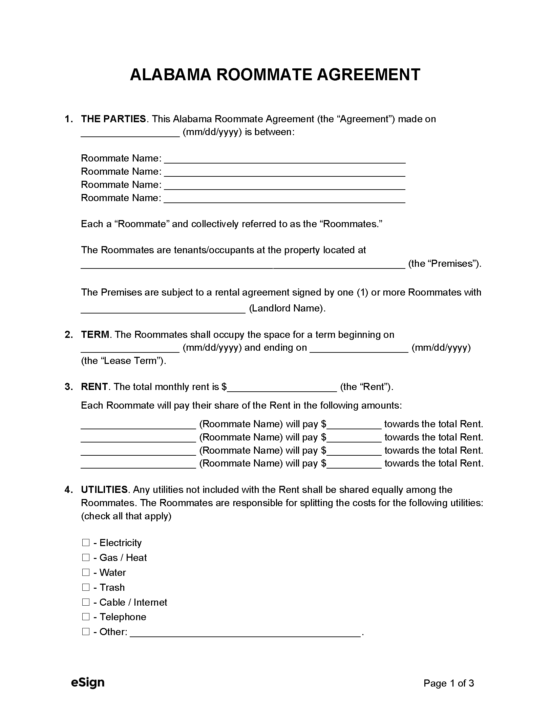 Roommate Agreement – Creates a set of rules and responsibilities for individuals sharing a rented living space. Roommate Agreement – Creates a set of rules and responsibilities for individuals sharing a rented living space.
Download: PDF, Word (.docx), OpenDocument |
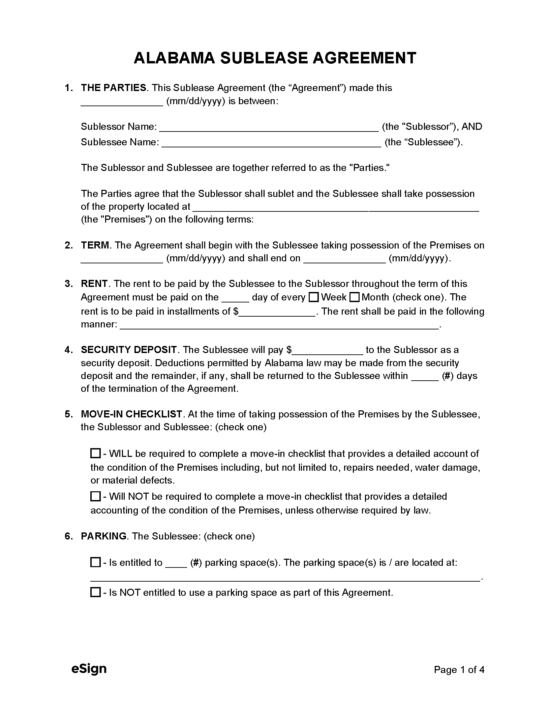 Sublease Agreement – An agreement between a tenant and a sub-tenant for renting a portion or all of the leased property. Sublease Agreement – An agreement between a tenant and a sub-tenant for renting a portion or all of the leased property.
Download: PDF, Word (.docx), OpenDocument |
Required Disclosures (2)
- Lead-Based Paint Disclosure Form (PDF) – Required for dwellings constructed prior to January 1, 1978, to reveal whether the landlord knows of any lead-based paint on the property.[1]
- Owner/Manager Identification – The landlord must indicate to the tenant the name and business address of the property owner or the person authorized to act on behalf of the owner for the purpose of receiving and delivering service of process, notices, and demands.[2]
Security Deposits
Maximum Amount ($) – One month’s rent is the maximum a landlord may request for a security deposit.[3]
- Exceptions – The landlord can charge an additional deposit for pets, changes to the premises, or if the tenant presents “increased liability risks.”
Collecting Interest – There is no statute requiring a landlord to collect interest on the security deposit on behalf of the tenant.
Returning to Tenant – The landlord has 60 days to return the security deposit.[4] If a forwarding address wasn’t provided, the deposit must be sent to the tenant’s last-known address or, if none, to the rental property (deposits left unclaimed for 90 days will be forfeited).[5]
Itemized List Required? – Yes, if the landlord has any deductions to the security deposit, it must be included in an itemized list and sent to the tenant within 60 days of lease termination.[6]
Separate Bank Account? – No, there is no statute requiring the landlord to hold a security deposit in a separate bank account.
Landlord’s Entry
General Access – The landlord must give two days’ notice before entering the tenant’s property for the following reasons:[7]
- Inspections
- Supplying necessary or agreed-upon repairs, decorations, alterations, or improvements
- Supplying necessary or agreed-upon services
- Showing the property to prospective or actual buyers, mortgagees, tenants, workmen, or contractors
Immediate Access – Landlords can only enter without notice in an emergency or with a court order.[8]
Rent Payments
Grace Period – There is no grace period in Alabama; rent is due on the day agreed upon in the lease agreement.[9]
Maximum Late Fee ($) – Alabama law does not specify a limit to the amount landlords can charge for late rent.
Bad Check (NSF) Fee – A maximum fee of $30 can be charged for a bounced check.[10]
Withholding Rent – The tenant cannot withhold rent in an effort to enforce their rights.[11]
Breaking a Lease
Non-Payment of Rent – A 7-day notice to quit can be sent to the tenant the day after rent is late.[12]
Non-Compliance – A 7-day notice to quit can be sent to the tenant if they violate any portion of their lease. If the violation is not cured within the 7-day period, the tenant must vacate the property.[13]
Tenant Maintenance – If the tenant fails to repair a health and safety issue within seven days of being notified or as quickly as the condition requires, the landlord can enter the unit, make necessary repairs, and bill the tenant for the costs.[14]
Lockouts – The landlord cannot change the locks if the tenant resides on the property, even if they violate their lease. A court order must be obtained to change the locks.[15]
Leaving Before the End Date – If a tenant leaves before the lease ends, they will be liable for lost rent for the months the property remains vacant.[16]
- Re-renting the Property – If the landlord rents the property before the lease ends, the tenant will not be liable for lost rent for such months. The landlord must make “reasonable efforts” to re-rent the property if a tenant leaves early.[17]
Lease Termination
Month-to-Month Tenancy – 30 days’ notice is required by the landlord or tenant to cancel a month-to-month tenancy.[18]
Unclaimed Property – The landlord must store the tenant’s belongings for 14 days following lease termination. Afterward, the landlord may sell the unclaimed property.[19]
Sources
- EPA/HUD Fact Sheet
- § 35-9A-202
- § 35-9A-201(a)
- § 35-9A-201(b)
- § 35-9A-201(d)
- § 35-9A-201(c)
- § 35-9A-303(a), (c)
- § 35-9A-303(b)
- § 35-9A-161(c)
- § 8-8-15(b)
- § 35-9A-164
- § 35-9A-421(b)
- § 35-9A-421(a)
- § 35-9A-422
- The Alabama Tenants’ Handbook (p. 14)
- § 35-9A-105
- § 35-9A-423(c)
- § 35-9A-441(b)
- § 35-9A-423(d)
